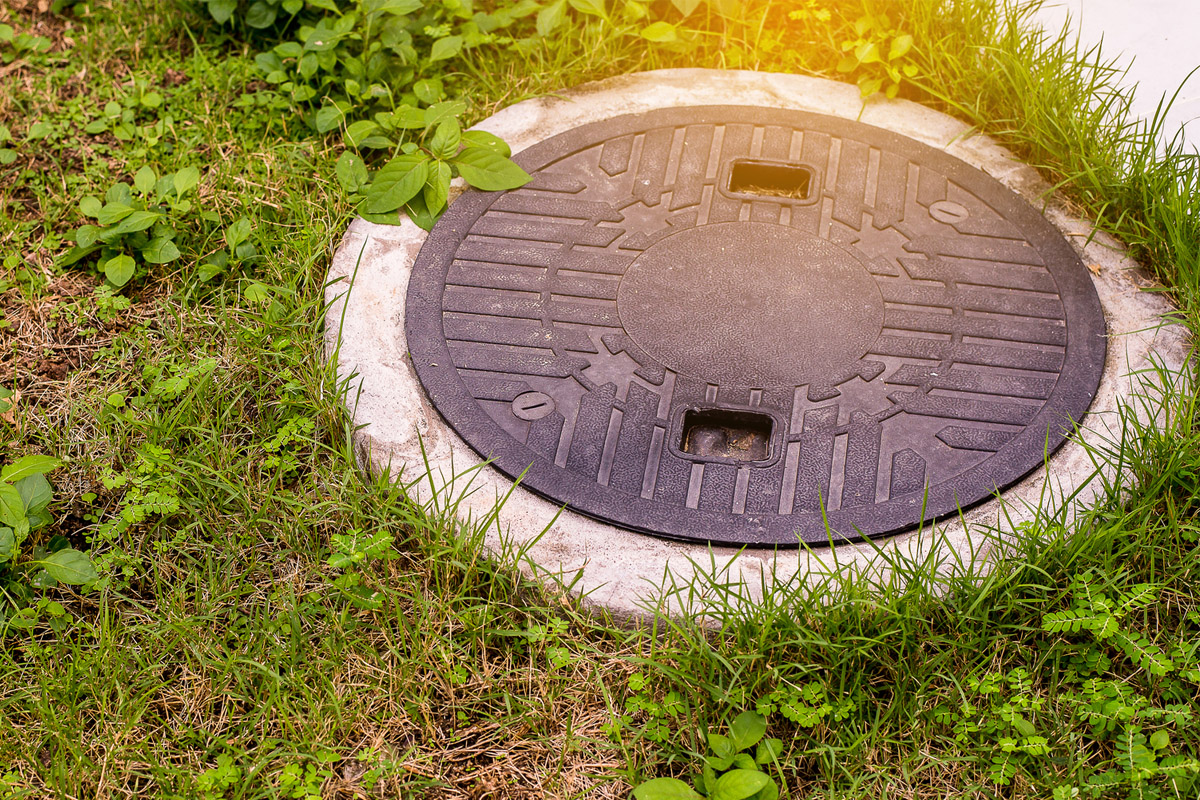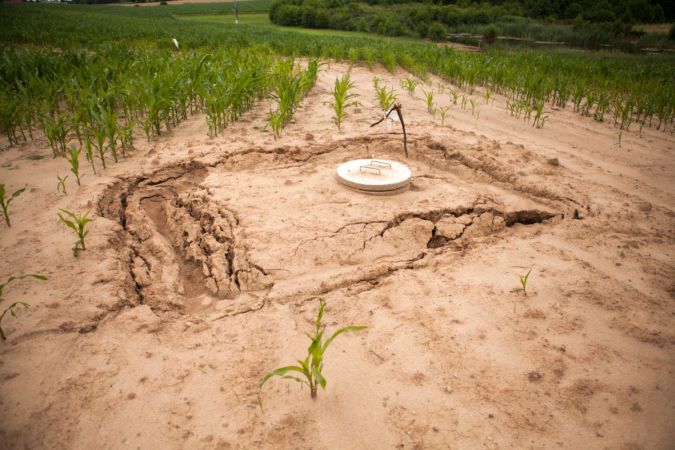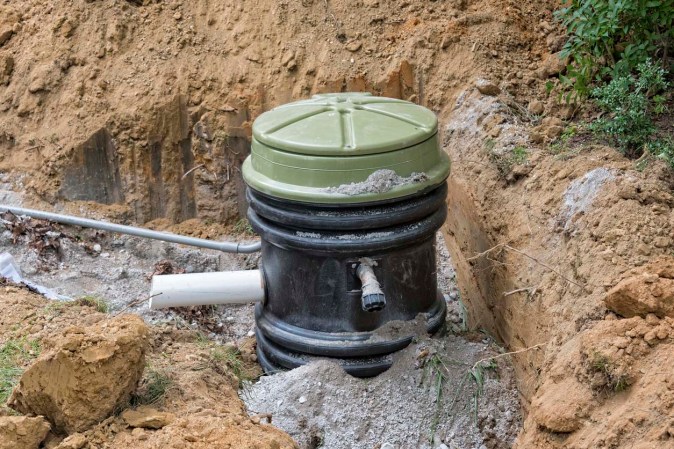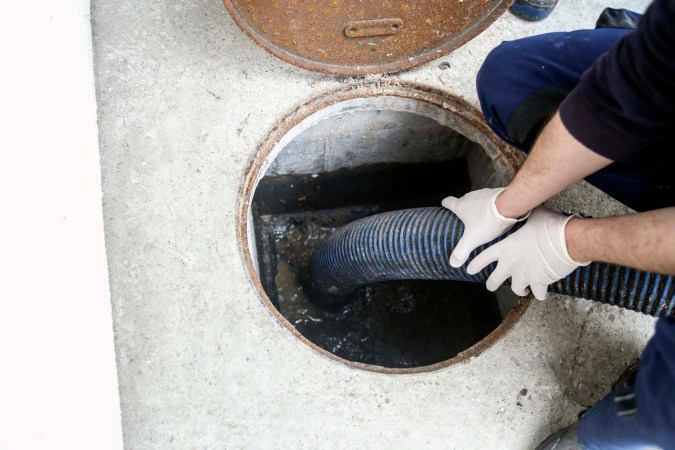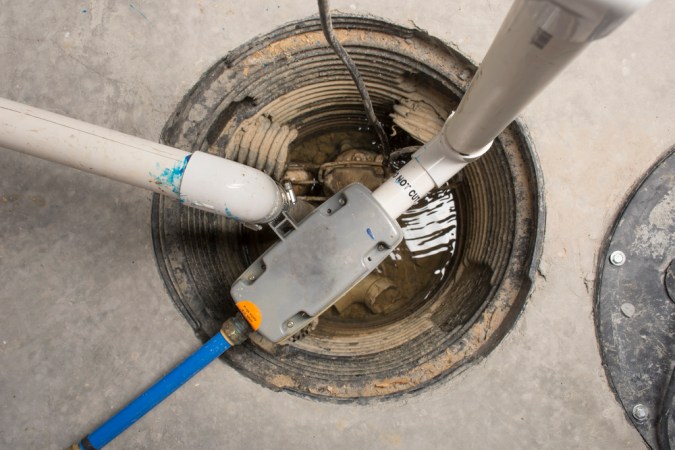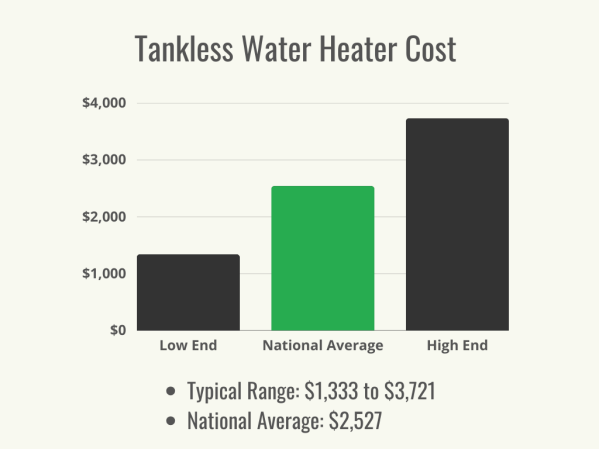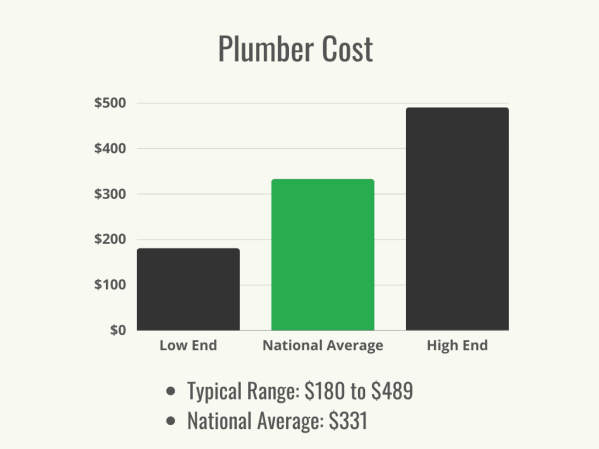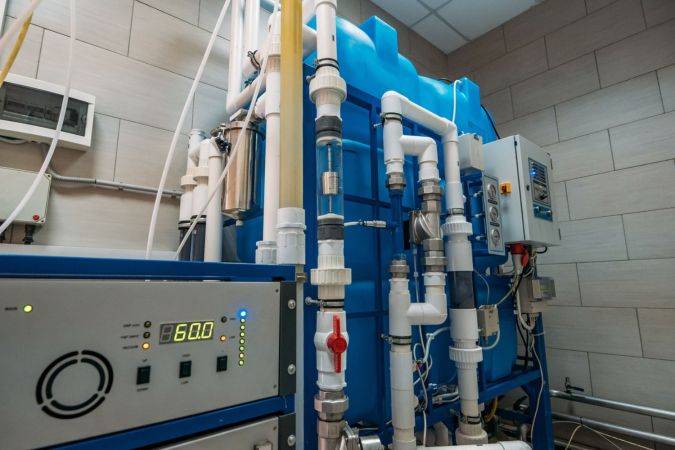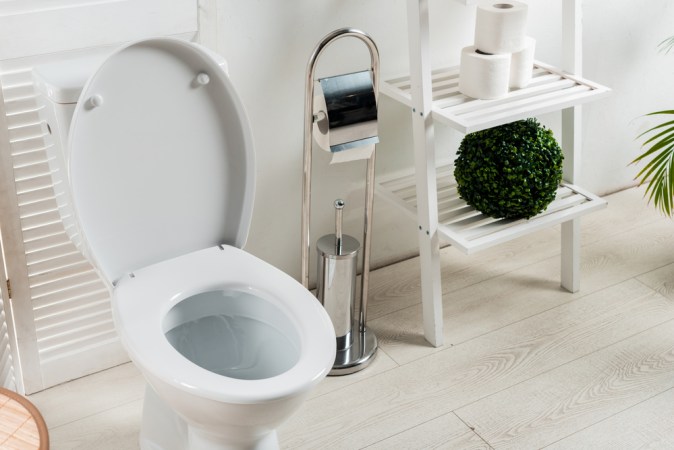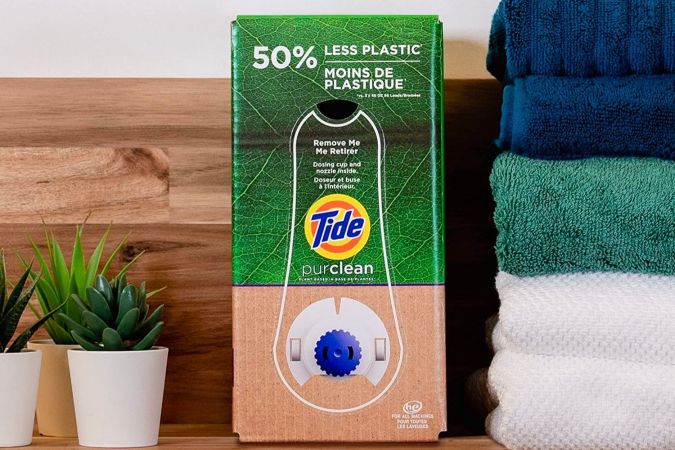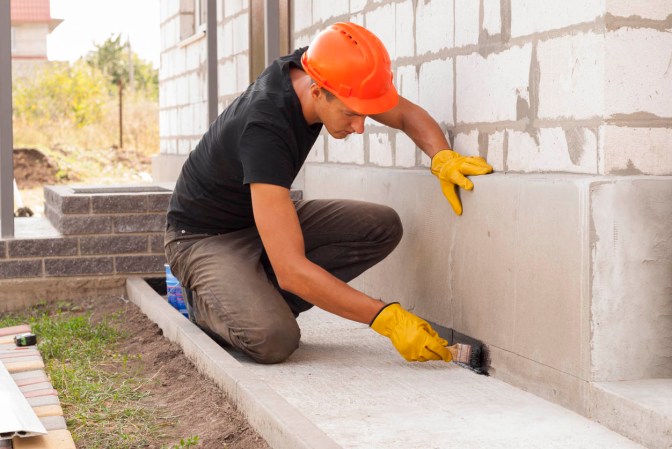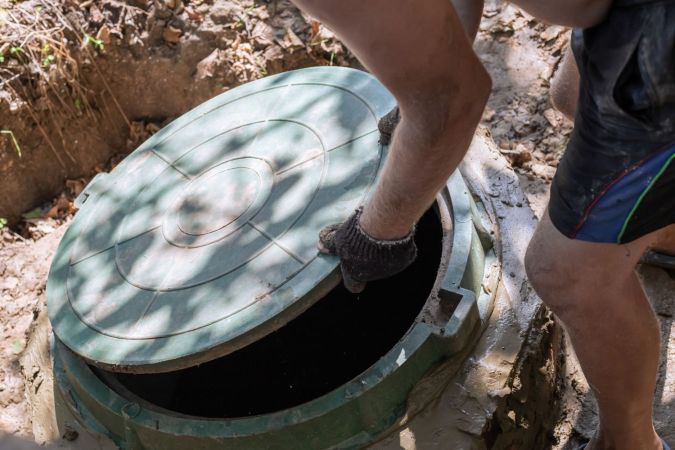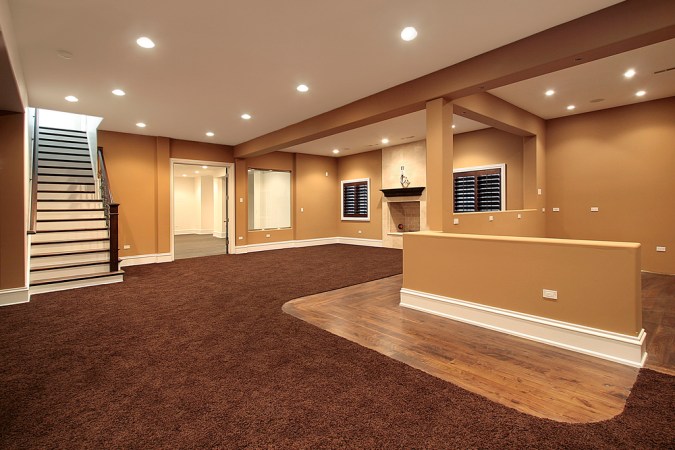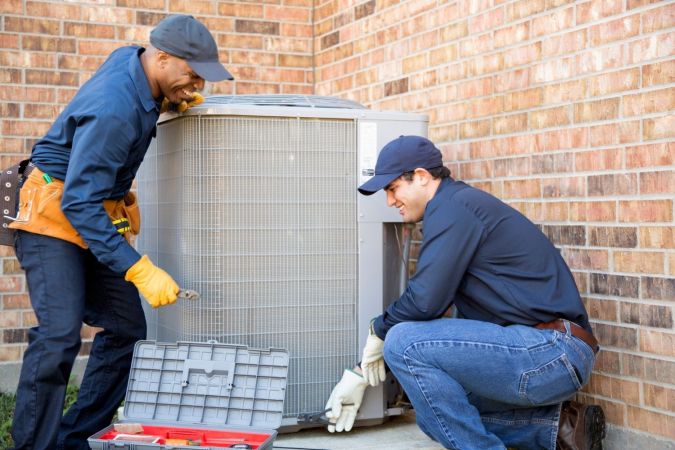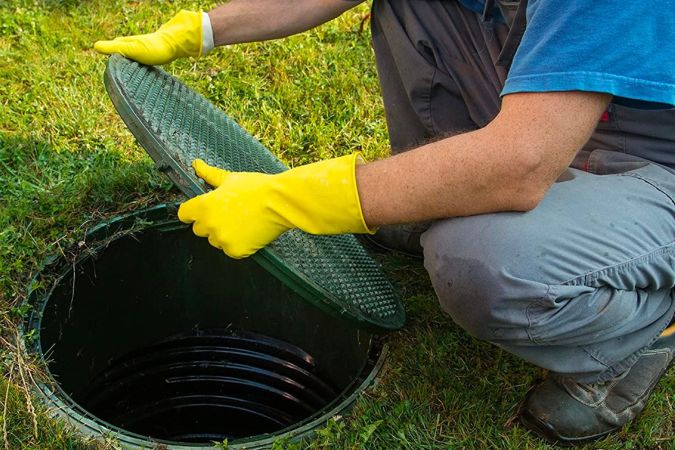We may earn revenue from the products available on this page and participate in affiliate programs. Learn More ›
- Typical Range: $3,109 to $9,677
- National Average: $6,361
Living in a rural area has its perks, but it also comes with some challenges that need a little extra consideration, like how to handle waste treatment. Rural and some suburban homes are generally not connected to municipal sewer lines that are used in more densely populated areas. It can be an expensive venture to pay for sewer pipes to extend to a new construction site, so septic tanks become a cost-effective alternative. These helpful and often-misunderstood systems are built underground to manage the treatment of waste and wastewater by separating organic matter while allowing the liquids to be reintroduced into the ground naturally.
When considering septic tank costs, homeowners should factor in the size of the home, amount of waste flow, the material the septic tank is made of, the cost of labor, and more. Some states have regulations regarding the minimum size of septic tanks, and all states have their own permit and inspection regulations and pricing before installation. These and other considerations are described in more detail below.
Factors in Calculating Septic Tank Cost
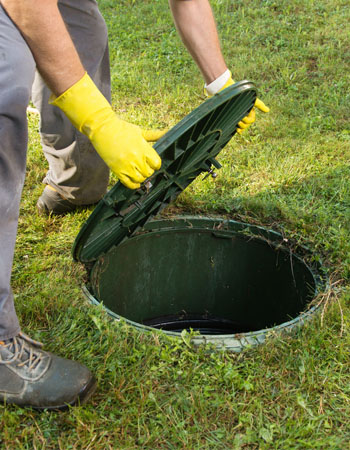
From house size to soil makeup, several factors influence septic tank costs. These costs also vary by region where soil content, permits, and material fees vary from one state to the next. While the national average for installing a septic tank is $6,361, the high end cost to install a septic tank system is $18,650. The following list includes the main factors that can affect septic tank installation so you can have a better idea of how to answer the question: How much does a septic tank cost?
House Size
House size is a primary factor in considering what size septic tank to purchase since it must be able to handle the amount of water and waste being produced. A 3-bedroom home would need a 1,000 gallon tank, which costs on average $600 to $1,000.
Tank Gallon Size
Standard septic tanks start at 750 gallons for 1- and 2-bedroom homes. A 3,000-gallon tank can accommodate the needs of some buildings with more than approximately 15 occupants, which would cost between $2,900 and $3,900.
Anaerobic vs. Aerobic
Anaerobic systems are less expensive septic tanks that can be installed (costing $2,000 to $5,000). They rely on oxygen-averse bacteria to naturally break down waste in the tank. Aerobic systems can cost between $10,000 and $20,000 to install since they utilize an air pump to aerate the tank to let oxygen-loving bacteria break down the waste.
Mound Septic System
When a ground inspection reveals that the soil is not well suited for a septic tank drain field, homeowners can install perforated drain tiles and a thin biofilm that help provide a suitable environment to naturally purify wastewater before it reaches the water table below. Building this space below the septic tank can result in a mounded appearance and can cost $15,000 to install on average.
Sand Filter Septic System
A sand filter septic system uses a pump to push the liquid or effluent matter to the filtration system, which consists of a box filled with sand-filled pipes. The wastewater is naturally filtered through the sand before reaching the water table below. On average, these septic tanks cost between $6,000 and $10,000 to install.
Pressure Distribution Septic System
For an average cost of $7,000 to $10,000, homeowners could opt for a pressure distribution septic system that can be installed within 2 feet of the water table. It utilizes pumps to process the effluent liquid into the drain field more quickly for processing before reaching the water table.
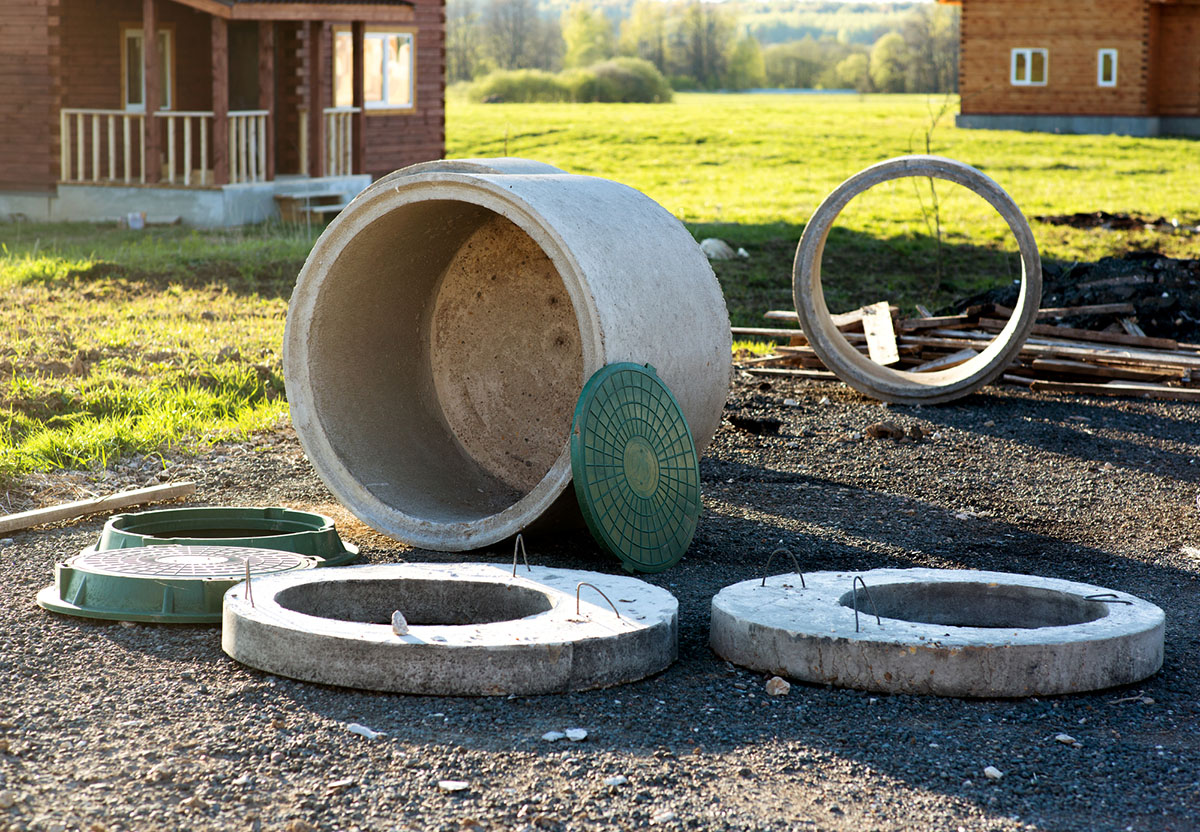
Septic Tank Cost for Replacement Parts
As with any mechanical system, issues are bound to arise. Septic tanks that are properly cleaned and maintained can last an average of 20 to 40 years. While some of the problems with septic tank systems are easy to solve, others will require significant assistance from a professional. From baffles to tank lids, these are the most common parts of a septic tank that may need to be replaced or repaired.
Baffle Replacement
Baffles are designed to help prevent scum from clogging inlets and pipes. Baffles that fail or get clogged are a common issue, and replacing them is usually much cheaper than replacing the entire tank. Replacement costs range between $300 and $500 including labor.
Septic Tank Pump Replacement
For septic tanks that require a pump to push the effluent from the tank to the drain field, it’s possible that the pump may fail to do the job properly. The average cost to replace a failed pump ranges between $800 and $1,400 including labor.
Tank Lid Replacement
A broken or rusted lid is a minor repair that costs between $30 and $70 before labor. Metal lids are the easiest to replace if they have rusted over, while a concrete lid may require some special equipment to remove and install the new lid.
Septic Tank Filter Replacement
Replacing a septic tank filter is the most common issue for most homeowners. The cost to have a replacement filter installed on a septic tank averages between $230 and $280.
Septic Drain Field Replacement
If a septic tank leach field or drain field becomes oversaturated, sewage can back up into the house. The average cost to dig out the existing drain field and install a new one runs $7,000.
Additional Costs and Considerations
With the installation of any septic tank system, there are several up-front costs and considerations to take into account. Permits must be obtained, soil must be tested, land needs to be prepared, and more. On occasion, a septic tank may require removal, which would be an additional cost to consider. While these tasks may seem daunting, they are easily completed with the help of qualified professionals.
Landscape Preparation
Once the best location is found, homeowners can clear the landscaping in preparation for the installation themselves or utilize the help of the septic tank installation company. On average, landscape preparation cost can range between $1,200 and $4,500, but this is often built into the cost of installation at a lower rate.
Soil Testing
Homeowners must obtain a percolation test prior to installing a septic tank to make sure that the ground can accommodate the system and meet local health department requirements. Engineers drill a hole to test soil permeability and the layers of sediment. This costs approximately $1,000 to $2,000 to complete.
Permits and Inspections
Local permits can be obtained once the soil has been tested and the appropriate system has been chosen. The cost of permits is set by local city and health departments who check and inspect the soil and designs. For more significant construction, a building permit may be required and can cost between $400 and $2,500. (Some regions may have lower fees for septic tank permits.)
Leach Field
The septic system leach field is a critical element that must be built properly to avoid problems down the road. This often includes laying the pipework from the house as well. The cost of installing the leach field varies due to the size, soil content, and whether a special drainage system will have to be installed. The average cost is $2,000 to $10,000.
Labor
On average, the labor costs to use a professional company to install a septic tank system range between $1,500 and $4,000. This includes the labor, materials, and insurance the company carries. An average rate would be $160 per hour.
Septic Tank Removal
In the event that a septic tank needs to be completely removed or replaced, additional time and labor are required to complete the job safely. The tank must be emptied, dug out, removed, and properly and safely disposed of. The average cost to pump out a septic tank is $250 to $600, and the additional cost to remove and dump a septic tank is approximately $5,500.
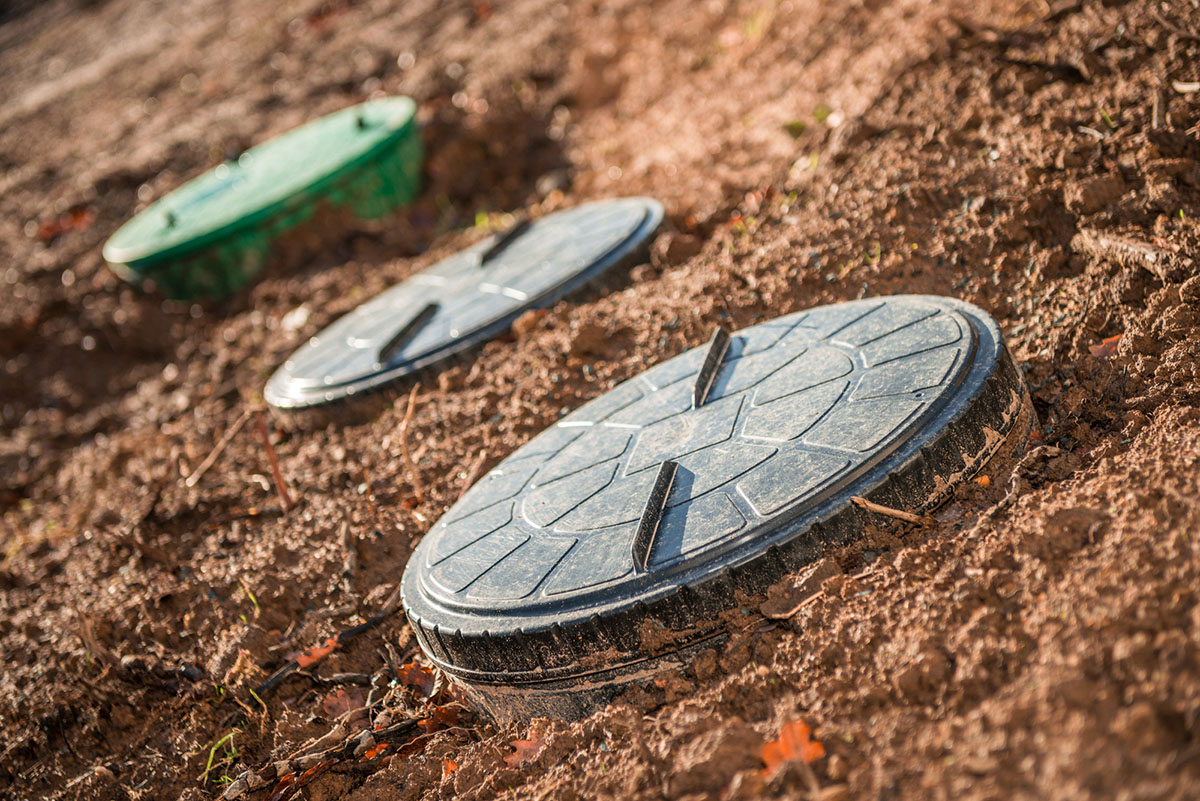
Septic Tank Cost: Types of Septic Tanks
There are only a few materials approved for septic tank designs, and each have their pros and cons. Adequately maintaining a septic tank can prolong the life of the system regardless of which material is chosen. The most common septic tanks are designed from concrete, fiberglass or plastic, and steel.
Concrete
Concrete tanks are the most common and durable for an average lifespan of 20 years. Over time, they can begin to crack and allow seepage of liquid waste out and groundwater into the tank, so it’s important to have inspections completed regularly. The average price of a concrete septic tank ranges between $2,350 and $6,750.
Fiberglass
Fiberglass septic tanks are a great alternative that resists any rusting, corrosion, and algae growth. They do not expand or contract either. While fiberglass tanks are heavier than plastic tanks, they are still at risk of shifting if water tables change or the ground shifts. These septic tanks cost approximately $1,600 to $2,000.
Plastic
With an average cost of $830 to $1,900, plastic septic tanks are a lightweight option compared to a concrete tank. They resist rusting and cracking as well. Though the lighter weight can make them easier to install, if installed improperly, they can rise through the shifting ground to the surface or break under shifting pressure.
Steel
Stainless steel is a durable metal for many uses, but stainless steel septic tanks are the least preferred style, as those made of this material can break down before their expected 20-year lifespan. Buried in the ground and subjected to corrosive materials, a steel septic tank has ample opportunities to rust or corrode. Older homes for sale will likely need an inspection to review the safety of the tank before they are sold.
Mobile Home Septic Tanks
Mobile home septic tanks are basically the same as fixed home septic tanks in size requirements, permits, and installation. The challenge with a mobile home septic tank system is installing it in a location that will not be driven over by the home itself or trucks moving the home. The weight of the mobile home or trucks could damage the septic tank, so it’s best to review its position before moving the mobile home.
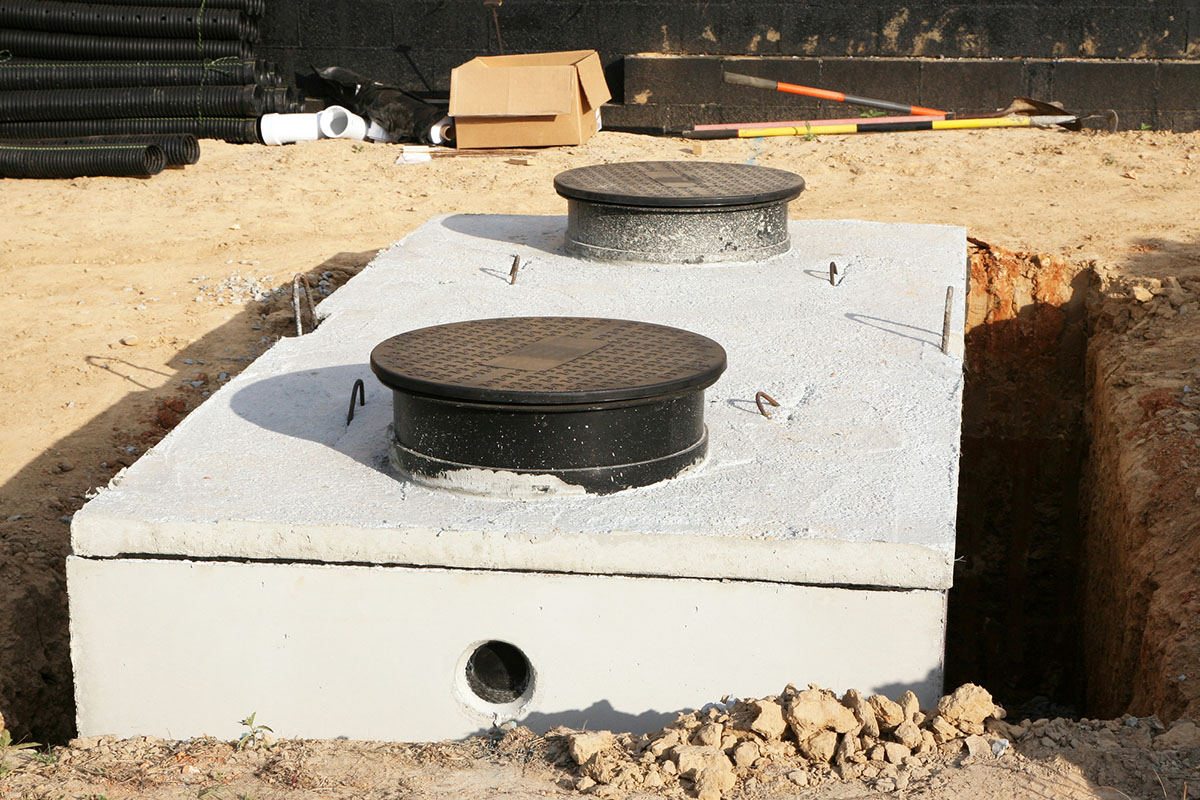
Septic Tank Cost: Types of Septic Tank Systems
Not all septic systems are designed to operate the same way. Some have been engineered to better accommodate homes that sit on a hill or have poor drainage. Others operate efficiently and safely enough with the existing soil layers to allow for natural purification before reaching the water table. The type of septic tank that’s best for your home and geographic area will affect the overall septic tank cost. There are three designs available to choose from, and qualified professionals can assist in determining which works best on the property.
Conventional Septic System
The most common is the conventional septic system that uses gravity to collect household waste in the tank. Solid waste will naturally settle on the bottom of the tank while liquids rise to the top. An outflow pipe near the top of the tank allows the liquid waste to be released into the drain field for decomposition when the tank reaches capacity. Thanks to a simple design, the average cost of $3,500 to $10,000 for a conventional septic system is lower than the cost of other designs.
Alternative Septic System
Alternative septic tanks work similarly to a conventional system, using gravity to collect the waste into the tank, but they rely on oxygen to help break down the waste inside the tank using a motor or pump. This means cleaner wastewater is pushed to the drain fields, which could require up to half the space of a regular drain field. The average cost of an alternative septic system is between $6,000 and $15,000.
Engineered Septic System
After a soil test has been completed, homeowners may discover that the ground is either too permeable or not permeable enough for a standard septic tank, and an engineered tank will need to be installed. These septic tanks must forcefully pump the liquid effluence into a special, engineered drain field. The system can be built on a new drain field mound or next to a sand-filled box that can purify the wastewater before it reaches the water table. An engineered septic system can cost on average between $12,000 and $15,000.
Septic Tank Cost: Do I Need a New Septic Tank?
The average lifespan of a septic tank is approximately 20 to 40 years, with some lasting even longer. Replacing a septic tank is a rare event within that lifespan as long as careful maintenance and regular inspections are performed. Here are a few of the more serious problems that may require a new septic tank installation.
Standing Water
Without a heavy rainfall, broken sprinkler line, or flooding river to blame for the extra water that’s visible on a part of a property, the remaining culprit is likely an oversaturated drain field or a broken pipe or septic tank. The excess liquid is not being properly absorbed into the ground and could be contaminated with bacteria.
Strange Smells
Contrary to popular belief, septic tanks should not smell all the time—after all, they are buried underground. A new odor of sewage can be caused by a septic tank that is too full and leaking solid waste. The leach field could have been contaminated and oversaturated by black water or contaminated wastewater.
Slow Draining
If the septic tank gets too full, all pipes will drain more slowly as there is less space for them to drain properly with gravity. When only one pipe drains slowly, there may be a blockage in only that pipe. If all toilets are flushing slowly or being backfilled with waste, a problem with the septic system needs to be addressed with repair or replacement.
Patchy Grass
When grass covers a septic tank and drain field, some problems can be identified by seeing patches of grass that suddenly grow more vibrantly. A wastewater leak can be an unsanitary method of watering or fertilizing the grass or small plants that grow above the system. Patchy grass may not be accompanied by a foul odor, but it’s best to ask for a professional inspection.
Aged System
Many homeowners who install a septic system move to a new home before the system ever needs to be replaced. However, if an older home was purchased that has an older system and repairs are frequently being made (or the system requires frequent pumping), it’s probably time to consider replacing the septic tank system.
House Size Increase
Since the size of the house is the primary determining factor for how large a septic tank is, expanding the home or increasing the water usage with additional people will affect the life of a septic tank. These are important factors that can affect whether the septic tank is sufficiently large enough to accommodate the home.
Nearby Contaminated Water Sources
Wastewater contamination can occur in nearby water sources if a septic tank has leaked improperly. If nitrate, nitrite, or coliform bacterias are discovered in natural water sources near the home, it’s important to investigate whether your septic tank is the source of the contamination.
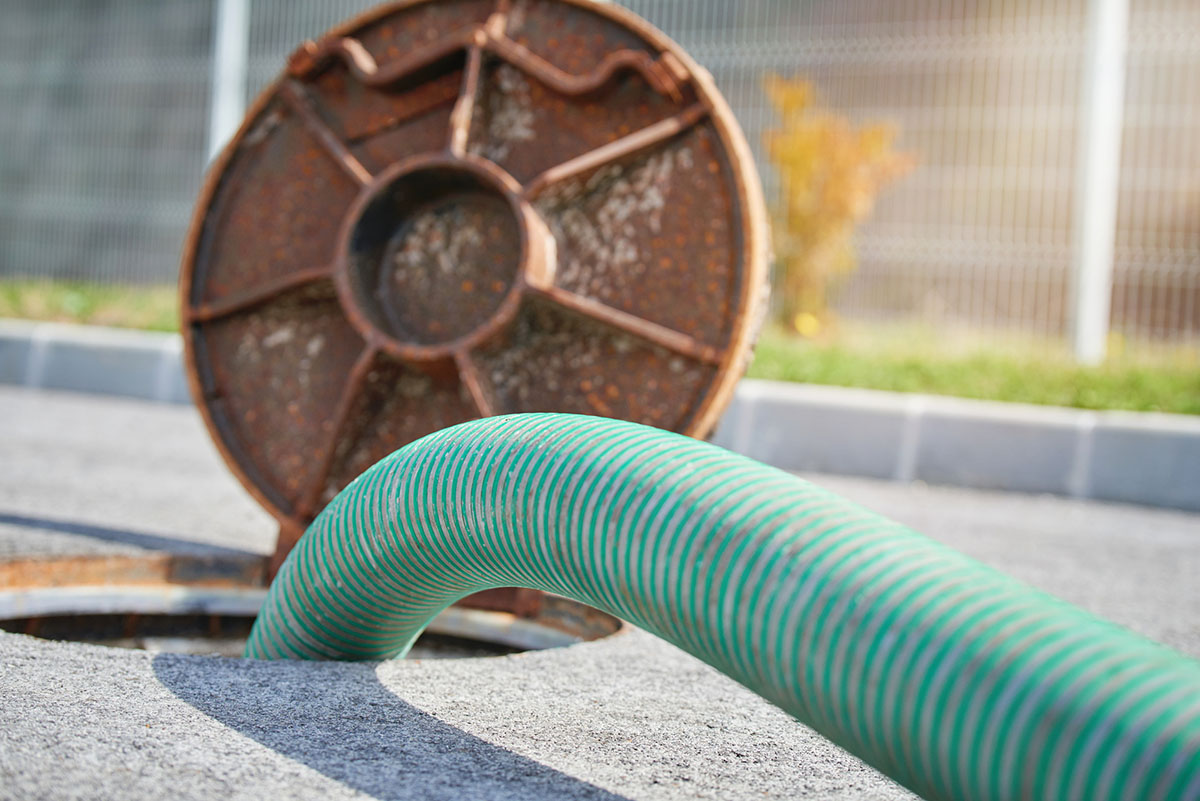
Septic Tank Cost: DIY vs. Hiring a Professional
Installing a septic tank system is no small task, but when municipal sewer systems are unavailable, it’s a task that’s perhaps unavoidable. While the costs to install a septic tank may seem high or complicated, it’s often a more cost-effective option to install a septic tank than trying to install sewer lines from the city, if that’s even an option.
Many homeowners are interested in doing a DIY septic tank installation to save money. There are a number of tasks that can easily be accomplished by homeowners. Coordinating soil tests and obtaining proper permits are easy tasks. Homeowners can also remove existing landscaping features or dig the holes and trenches for the septic tank. Beyond these steps, it’s best to consider leaving the actual installation to a professional company that is licensed and insured in order to complete the job safely.
The stakes are high when installing a septic tank system since it’s the method of collecting and purifying infectious disease waste like E. coli. Improperly installing a septic tank could result in foul smells, contaminated water sources, and standing water on the property, all of which can put family and neighbors at risk. With qualified professionals doing the heavy lifting, homeowners can enjoy a smooth system that requires little effort to maintain. Once a septic tank company has been selected, homeowners can work with them to identify any tasks that can be done by the homeowner, if desired.
How to Save Money on Septic Tank Cost
There are a few ways that can help save money on septic tank costs. Some of these can be achieved by DIY-ing some of the easier preinstallation tasks. Here are a few ideas to get started.
- Ask about current or upcoming discounts or promotions.
- Request a quote from at least two companies, if possible.
- Ask about all-in-one installation costs, and compare them to expected costs in the event you complete some tasks on your own.
- Consider preparing the land before installation begins.
- Consider purchasing and placing the gravel that’s used beneath the tank and drain field yourself.
- Request soil tests and permits yourself. However, be aware that some companies will only accept permits they obtained.
Questions to Ask About Septic Tank Cost
A septic tank might not be a product that is familiar to a homeowner. Having a basic understanding of what owning a septic tank will entail is an important step to successful home maintenance. Whether you’re buying a home with an existing septic tank, or you’re building a home that will need a septic tank system, here are some helpful questions to ask.
- What is the difference between a septic tank and a sewage system?
- Will I smell raw sewage all the time if I install a septic tank in my backyard?
- Why do I need to get a percolation test?
- How much space do I need to reserve for a septic tank?
- What’s the best size septic tank for my house?
- How much will it cost?
- Can I install one on my own?
- Do I have to maintain it myself?
- Can it be repaired?
- How often do septic tanks need to be replaced?
- Are there any best practices I should implement with my water usage in my home to prevent problems with my septic tank?
- How often do I need to have my septic tank pumped?
- What is the septic tank pumping cost near me?
- Why does my septic tank seem to have problems when it rains?
- Can septic tanks freeze?
- Can I plant trees near my septic tank?
- If I lose power, will my septic tank still work properly?
FAQs
Choosing the best septic tank system for your home can seem like a complicated task. Having a professional’s help can make the process easier, especially when you’re armed with the answers to these frequently asked questions.
Q. How many years does a septic tank last?
The average lifespan of a septic tank is 20 to 40 years. Steel tanks may last less than 20 years due to corrosion, but concrete tanks could last longer than 40 years if properly maintained. The lifespan of the drain field for liquid waste can last anywhere from five years to 50 years depending on soil composition, weather influences, usage, and quality of engineered systems.
Q. Can a homeowner install their own septic system?
There are a number of tasks that can be completed by DIY-enthusiastic homeowners, including preparing the landscaping, digging the holes, and purchasing the gravel. However, many states require that licensed companies install the septic tank since improper installation can lead to waste contaminants in nearby water sources.
Q. What type of septic tank is the best?
The composition of the ground around the home and the size of the home are two main factors that determine the best kind of septic tank. Concrete tanks are long lasting, and fiberglass tanks resist corrosion. If the soil is not permeable, an engineered pumping system may need to be installed to properly drain and purify liquid waste. A qualified professional can help determine the best septic tank for your home after completing a soil test.
Sources: HomeAdvisor, HomeGuide
